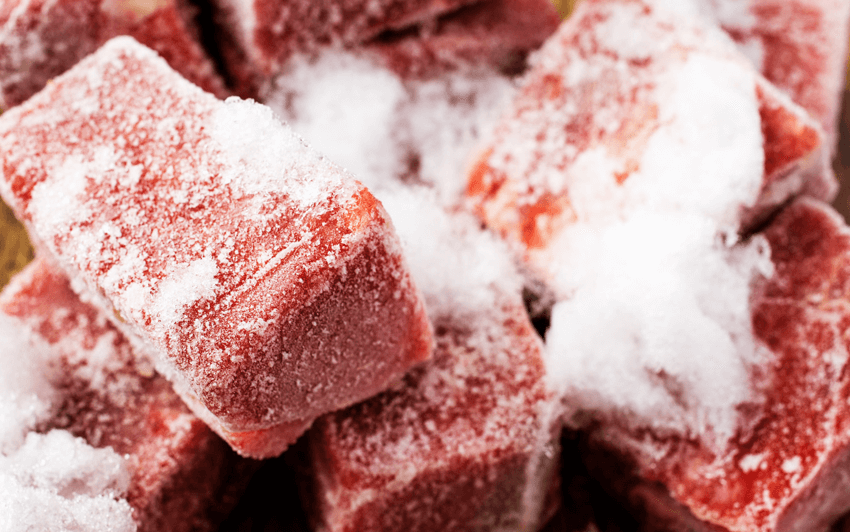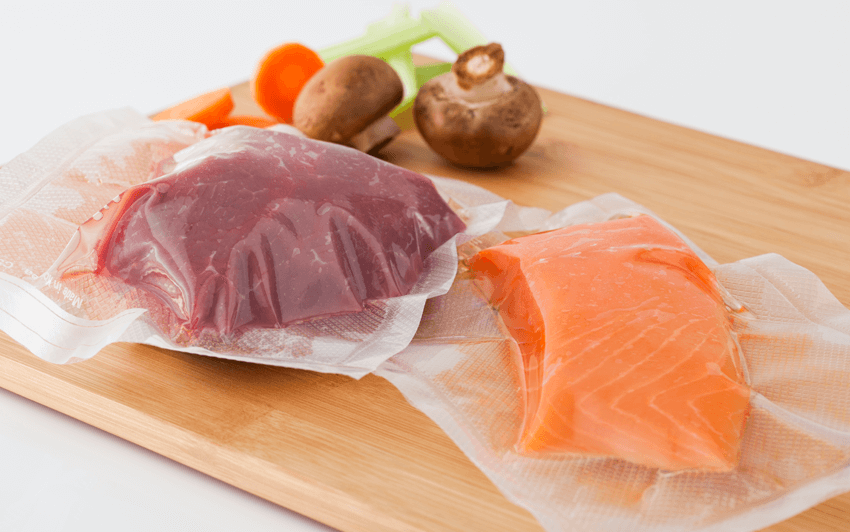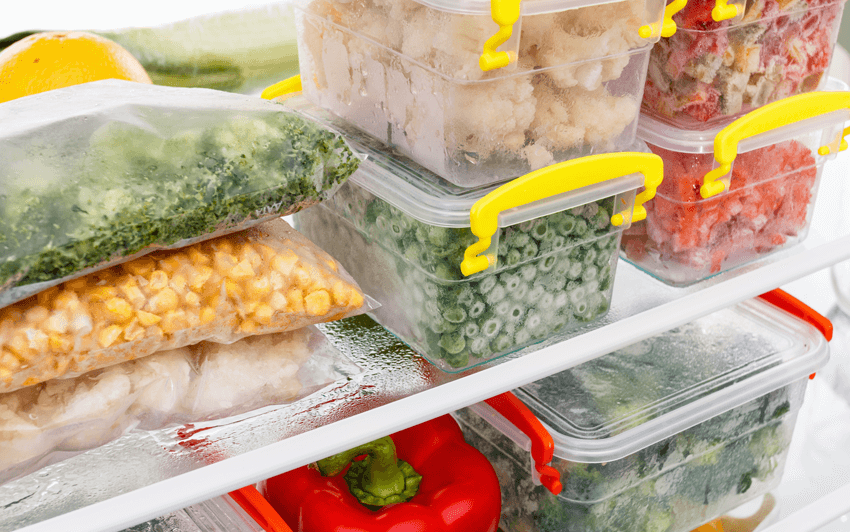
How to Freeze Food for Maximum Freshness
If you have decided to buy in bulk or found an excellent deal on meat that you can’t pass up, it may be hard to eat it all before it spoils. If you package this food properly, it can last for weeks and months in your freezer. You just need to know how to freeze food for maximum freshness. There are many good reasons to freeze food. Buying food fresh and freezing it yourself allows you to control when it was butchered – if you shop at the butcher for meat. You can further control how well the food is packaged. There are also savings to be had when you buy meat that is on sale or in bulk. If you can find larger cuts on sale, you can break them down yourself for a lot less money than buying individual cuts. Just imagine how thick you can make your thick-cut pork chops!
How to Freeze Food
When freezing meat for long-term storage, your best bet is to remove it from the store packaging. Separate your meat into per-person portions. Wrap each piece in a layer of plastic wrap or cling film. Group your meat packages together in meal-sized groupings (depending on how many people you tend to cook for). At this point, you can wrap them in another layer of wrap, or place them into freezer bags and remove as much air as possible from the bag before sealing. Before you throw these convenient bundles into the freezer, don’t forget to label them with cut and date them too.
Freezer burn occurs when the water – in the form of ice – evaporates from the surface of frozen food. This is called sublimation. This sublimation leaves that particular section of meat a dry and tasteless texture that is very undesirable. Freezer burn doesn’t happen overnight though, it happens when air gets at food that’s been frozen for an extended period of time.
Steps for Freezing Food
-
Remove store packaging
-
Portion per person
-
Tightly wrap in cling wrap
-
(Optional) Group for grab 'n' go meal prep
-
More plastic wrap, or into freezer bags, remove air when sealing
-
Label the cut of meat and the date you packaged it
Tips for Defrosting Food
-
Cold water bath, especially effective on smaller cuts, keep packaged
-
Place on a plate in the fridge overnight, or a couple of days, effective for larger cuts
-
Do not microwave – it may be a setting on the unit, but this cooks some spots while others remain frozen
-
Do not leave on the counter all day - bacteria will grow, and meat can go rancid
-
Do not grill meat from frozen – it’s bad for your food, it’s bad for your grill
Freezer Life
Frozen food doesn’t last forever; don’t let it go sitting in the freezer for too long. Here are the best ways to manage meat when storing it in the freezer.
Red Meat: 4 to 12 months
Red meat handles being in the freezer the best, it will last the longest. This is due to the fact that red meats contain less water and more fat. When freezing and storing red meat the protein, minerals, and vitamins A and D, are largely preserved because fewer ice crystals form throughout the freezing process. Properly packaged ground meat will last up to four months, while steaks, chops, and larger cuts, like roasts, can last up to a year.
White Meat: 6 months
White meat includes chicken and pork. They contain more water than red meat, which means that being frozen will eventually break down the cellular walls and leaves it watery if kept frozen too long. Any frozen white meat should be eaten within six months.
Seafood: 1 to 3 months
Seafood is unique. It’s usually flash-frozen on the boat before it even gets to land for packaging and arrival on your grocer’s shelves. That is unless you caught it yourself. Seafood that you purchase from anywhere is likely to be at least a week old by the time you buy it. Seafood lasts the shortest amount of time, and that length is largely dependent on the quality of wrapping and size of the fillet, however, three months is around the maximum you should keep fish in the freezer. Shellfish and crustaceans have shells and a higher fat content meaning that they will freeze the best, followed closely by larger-thicker fillets. The thinner fillets and delicate fish-like soles do not fare as well, especially after longer periods of time.
Dairy: 2 months
You can freeze butter without any issues; just remember to thaw it before you need to use it. Milk, yogurt, and sour cream do not freeze well. They all tend to separate when thawed. Cheese is a 50/50 thing, but block cheeses tend to get crumbly when thawed again. Dairy keeps for about 2 months before the effects of freezing become undeniable.
Veggies and Fruit: 1 month
Some people like to buy fresh fruits and veggies to freeze as well. Veggies that are strong and hearty like broccoli, cauliflower, squash, and carrots will do well if blanched and sealed well in airtight packaging. Onions, peppers, and anything leafy tend to liquefy upon thawing. Fresh herbs can be washed and frozen in small quantities with oil. Fruit doesn’t do very well. Berries of any kind need to be washed and stored in an airtight container, however, when thawed will become mushy. Citrus can be frozen in slices, or peeled and segmented, it is best used in baking and cooking afterward. Apples are best frozen after being cooked and will be well suited to pies and baking.
How to Buy Frozen Food
My favorite butcher sells both fresh and frozen meat, as well as homemade, prepackaged meals. The idea is that he’s cut it all himself and flash-frozen all of the food for maximum freshness. The packages are vacuum-sealed; available in individual portions as well as packed in bulk. That is not the case with boxes of processed frozen food. Those boxes usually contain a bag full of loose meatballs, sausage rolls, or chicken breasts, which will quickly and easily become freezer burned and inedible.
If you are buying frozen food with the intent to store it for long periods, try to buy unprocessed meat that doesn’t come in a bag inside a box, your best bet for this is to buy from a butcher. If you want to make your own cuts, buying larger meats like whole pork loins, or chicken would be ideal. Try not to let any meat that is frozen thaw too much between your shopping trip and getting it back into the freezer. While in store, make sure that you inspect anything frozen for ice crystals or “dry” patches. These indicate that meat has been frozen, thawed, and refrozen, or that it is freezer burned. Meat that has been thawed and refrozen could also be rancid without you knowing it until you thaw it for dinner. That has happened to me before.
Now that you know all of this about freezing food, will you continue to give it the cold shoulder? Visit our Facebook, Instagram, and Twitter pages to learn other useful tips and tricks about cooking and your grill.
Happy Grilling!



